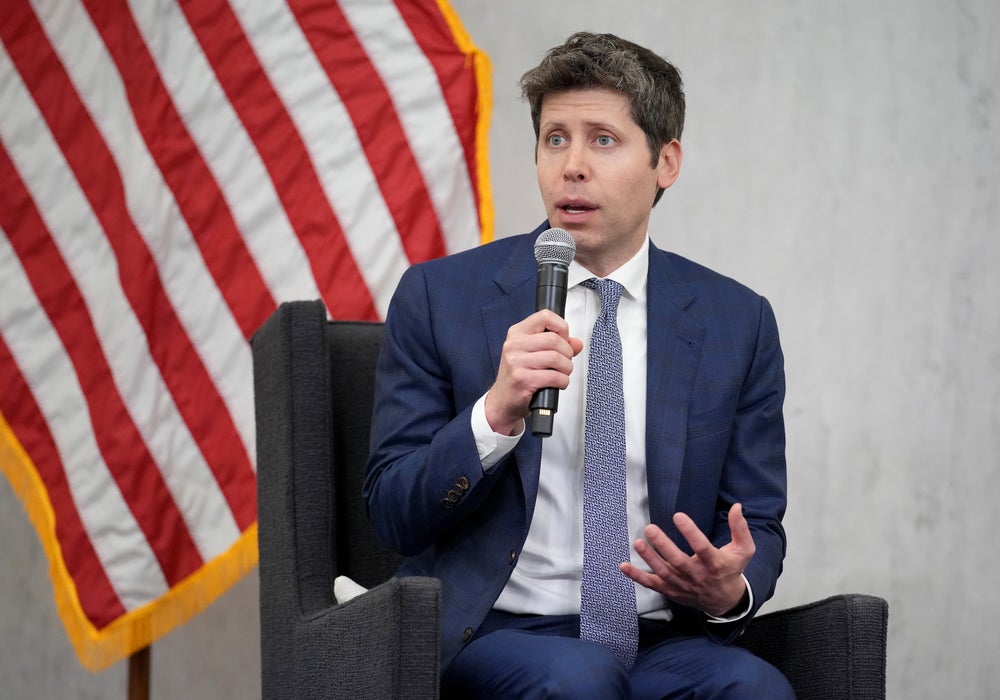James Dyson Created His ‘Mad’ Vacuum Idea While $1M in Debt
In 1978, James Dyson had an idea for a bagless vacuum cleaner that maintained suction. He was frustrated with what was considered to be a top-of-the-line model, which he said frequently clogged and lost cleaning power as soon as it filled with dust.
Dyson worked on his idea full-time, and after five years of work and 5,127 failed prototypes, he created the world’s first bagless vacuum cleaner — the now-famous Dyson, which has since become a consumer electronics brand reaching sales of $9.6 billion in 2023. But those early years came at a cost: He was borrowing heavily from the bank to make ends meet and had accumulated over $1 million in debt.
“Eventually, I owed over a million dollars, which for a penniless person in those days, going back 30 odd years, was a lot of money,” Dyson, 78, told Entrepreneur in an interview. “I didn’t have any money.”
Related: Emma Grede Dropped Out of School at 16. Now the Skims Boss Runs a $4 Billion Empire.
But he also had “little to lose,” he says, which is why he took a chance on his vacuum idea despite the financial pit. He lost his father at a young age and felt a keen sense of ownership and passion for what he was building and for his future.
“I suppose I don’t mind living on the edge,” Dyson said. “I lost my father when I was nine years old. I had it built into me that my future was entirely down to me, and to do it on my own.”
“I wanted to do it,” he added.
 James Dyson. Credit: Dyson
James Dyson. Credit: Dyson
Financial constraints made Dyson more creative because not having money taught him how to cope without it. For example, he couldn’t hire salespeople, advertisers, or promoters, so he went out himself to sell the vacuum cleaner.
“It took quite a long time,” Dyson said. “Almost every businessperson I spoke to said that I was mad.”
In 1993, Dyson set up his own shop and produced the first unit of the Dyson Dual Cyclone DC-01 vacuum cleaner at a price of $399. By 1998, Dyson had sold 1.4 million units of the vacuum globally, and by 2004, the DC-01 was cemented as a commercial success, outselling its nearest competitor in the U.K. by a ratio of five to one, per Industry Week.
In recent years, Dyson’s eponymous company has reached new heights. In 2023, with a broader product portfolio, including hair tools, lighting, fans, and headphones, Dyson’s company achieved a record global revenue of £7.1 billion ($9.6 billion) and employed 6,500 workers. Revenue increased 9% from the previous year.
Now, Dyson’s net worth is reportedly around $15.3 billion, making him the third-wealthiest person in the U.K. He’s received other honors, too, including a knighthood in 2006 for his services to business.
Dyson has certainly paid off those early debts and says he celebrates the “little successes” just as much (or even more) than the big ones. He points to Dyson hand dryers as an example — the product isn’t a “huge” business, like, say, the Dyson hair dryer, he says, but he still finds it “interesting.”
“You shouldn’t do everything in life just to get big numbers, big successes,” Dyson said. “Little successes are just as satisfying.”
Join top CEOs, founders, and operators at the Level Up conference to unlock strategies for scaling your business, boosting revenue, and building sustainable success.
In 1978, James Dyson had an idea for a bagless vacuum cleaner that maintained suction. He was frustrated with what was considered to be a top-of-the-line model, which he said frequently clogged and lost cleaning power as soon as it filled with dust.
Dyson worked on his idea full-time, and after five years of work and 5,127 failed prototypes, he created the world’s first bagless vacuum cleaner — the now-famous Dyson, which has since become a consumer electronics brand reaching sales of $9.6 billion in 2023. But those early years came at a cost: He was borrowing heavily from the bank to make ends meet and had accumulated over $1 million in debt.
“Eventually, I owed over a million dollars, which for a penniless person in those days, going back 30 odd years, was a lot of money,” Dyson, 78, told Entrepreneur in an interview. “I didn’t have any money.”
The rest of this article is locked.
Join Entrepreneur+ today for access.
James Dyson Created His ‘Mad’ Vacuum Idea While $1M in Debt Read More »




 Getty Stock | 270 Park Ave in Manhattan under construction.
Getty Stock | 270 Park Ave in Manhattan under construction.
 Berkshire Hathaway CEO Warren Buffett. Photo by Daniel Zuchnik/WireImage
Berkshire Hathaway CEO Warren Buffett. Photo by Daniel Zuchnik/WireImage


 Image Credit: Courtesy of Camp Social. Liv Schreiber.
Image Credit: Courtesy of Camp Social. Liv Schreiber. Image Credit: Courtesy of Camp Social
Image Credit: Courtesy of Camp Social Image Credit: Courtesy of Camp Social
Image Credit: Courtesy of Camp Social Image Credit: Courtesy of Camp Social
Image Credit: Courtesy of Camp Social Image Credit: Courtesy of Camp Social
Image Credit: Courtesy of Camp Social
 OpenAI CEO Sam Altman. Photo by Andrew Harnik/Getty Images
OpenAI CEO Sam Altman. Photo by Andrew Harnik/Getty Images




